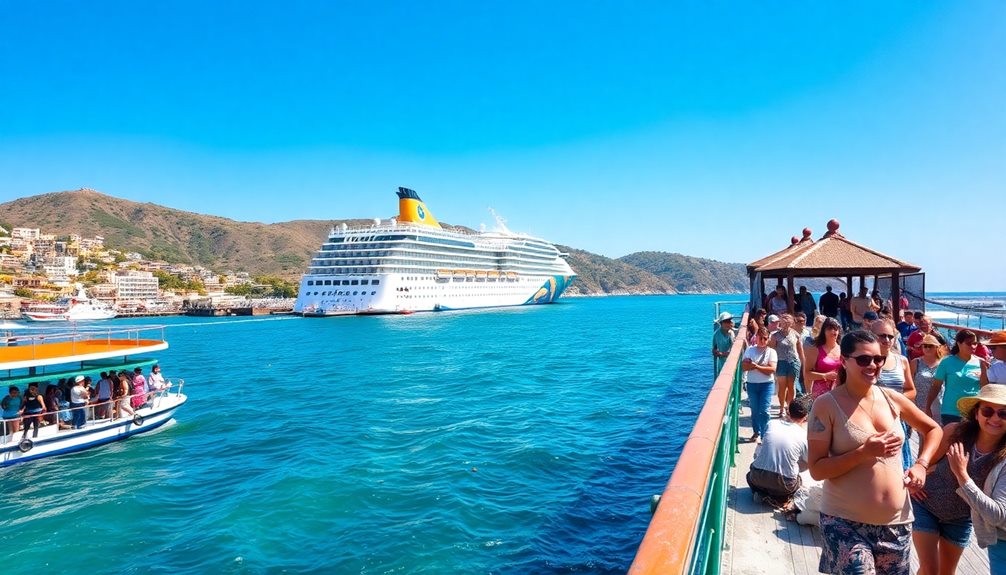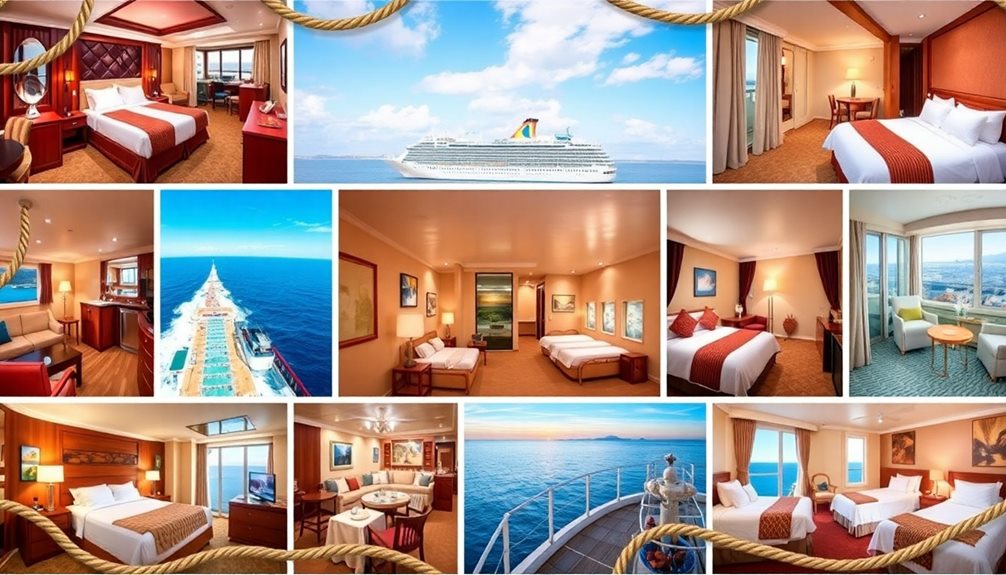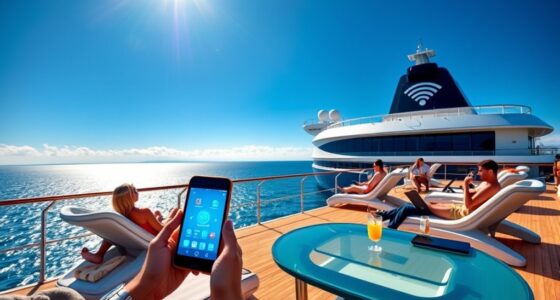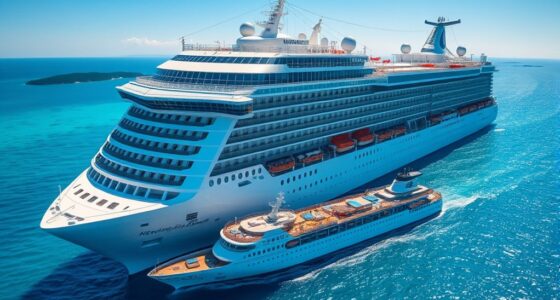When planning shore excursions, it's crucial to compare policies from cruise lines and independent providers. Cruise lines offer reliable excursions, assuring the ship will wait for you. Booking typically opens 90 days prior to sailing, often with discounts available. However, independent excursions can be cheaper but require careful logistics. Cancellation policies also vary greatly. Costs can range from $50 to over $400, and tipping practices differ as well. To guarantee a memorable experience, weigh your options wisely. The insights offered here can help you make informed choices for your next adventure.
Key Takeaways
- Cruise lines offer pre-screened excursions, ensuring reliability, while independent providers may offer lower prices but require self-management.
- Booking for excursions typically opens 90 days prior to departure, with early bookings potentially offering discounts up to 30%.
- Cancellation policies vary significantly; cruise line excursions guarantee the ship will wait, while independent providers may impose strict penalties for late returns.
- Costs for excursions range from $50 to $400+, with luxury cruises often including excursions in the fare.
- Tipping guidelines suggest $5 to $20 for guides and 5% to 20% for private tours; local customs should be considered.
Overview of Shore Excursion Policies
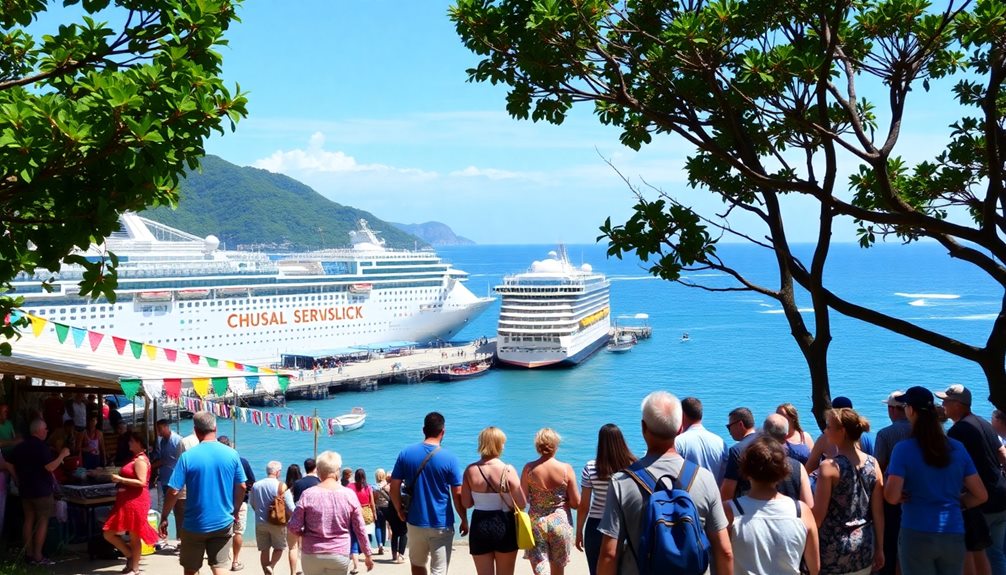
When planning your cruise, understanding shore excursion policies is vital to secure a smooth experience. Cruise lines typically offer pre-screened shore excursions, guaranteeing reliability, safety, and popularity. This means you can book organized tours with confidence, knowing they've been vetted for a quality experience.
Generally, booking opens 90 days prior to departure, giving you ample time to secure spots on those sought-after tours.
On the other hand, independent excursion providers often present competitive pricing, but you'll need to handle your own logistics. Timing becomes essential, as you must ensure you return to the ship promptly. Unlike cruise line excursions, independent providers don't guarantee that the ship will wait for late arrivals, which can add stress to your adventure.
Also, be aware that cancellation policies vary widely between cruise lines and independent providers. Knowing these terms before you book can save you from unexpected fees or complications.
Ultimately, whether you choose cruise lines or independent providers, understanding these shore excursion policies will help you make informed decisions and enjoy your cruise to the fullest.
Booking and Cancellation Terms
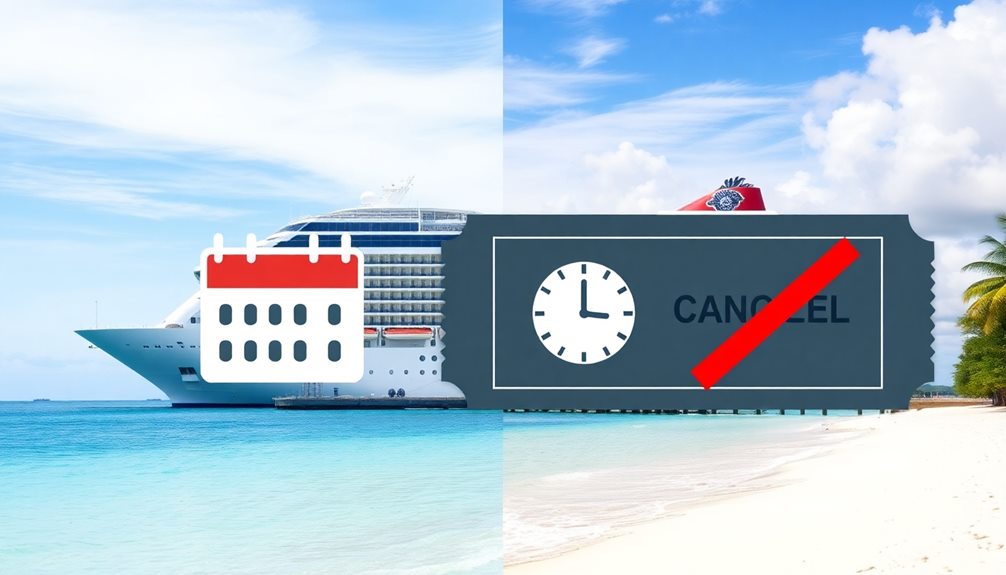
Understanding booking and cancellation terms is essential to avoid surprises during your cruise. Most cruise lines allow you to book shore excursions up to 90 days before departure, often offering convenient online options. Early booking not only secures your spot but can also lead to better pricing, with discounts of up to 30% for those who reserve ahead of sailing.
However, it's vital to familiarize yourself with the cancellation policies, as they can vary greatly. Some cruise lines impose penalties for last-minute cancellations, while independent providers may have more flexible terms. Be sure to read the fine print, particularly regarding onboard credits; certain pre-sailing bookings may not allow their use.
If you're considering independent excursion providers, understand that they typically require a written commitment for timely returns to the ship. In contrast, cruise line excursions guarantee that the ship will wait for returning groups.
Cost Comparisons for Excursions
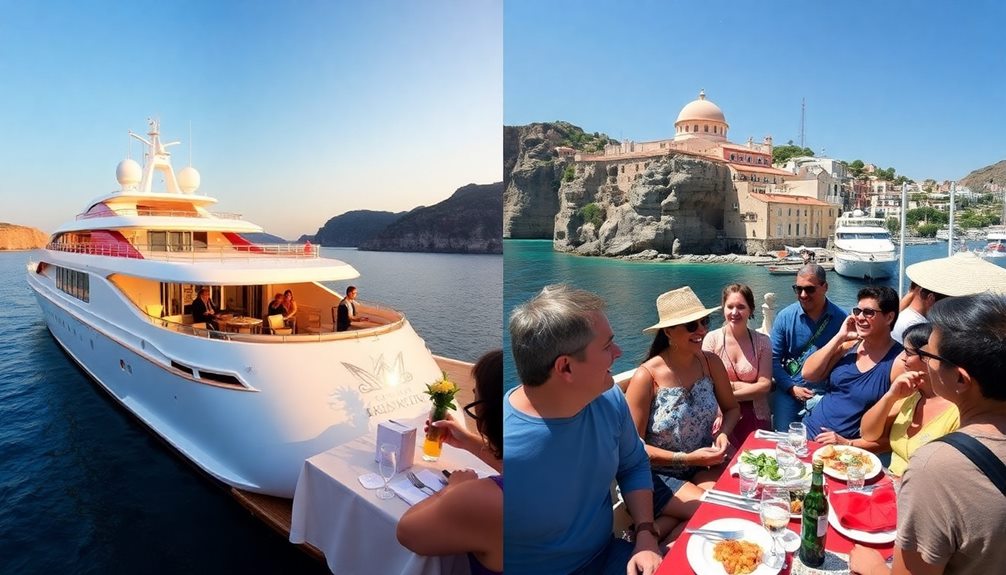
Prices for shore excursions can vary widely, impacting your cruise budget considerably. Mainstream cruise lines often charge between $50 to $200 per person for excursions, while exclusive experiences like helicopter tours can escalate to several hundred dollars.
Unlike luxury and expedition cruises that may include some excursions in their fares, mainstream lines typically require you to purchase each tour separately.
It's essential to conduct cost comparisons between cruise line excursions and independent vendors. You might find that independent options offer similar experiences at lower prices, especially for popular activities.
Booking excursions in advance can also lead to discounts; some cruise lines provide up to 30% off for tours reserved before sailing.
To avoid overspending, you should establish a budget for your excursions. Don't forget to factor in additional costs such as meals, tips, and souvenirs, as these can quickly add up.
Tipping Guidelines and Practices
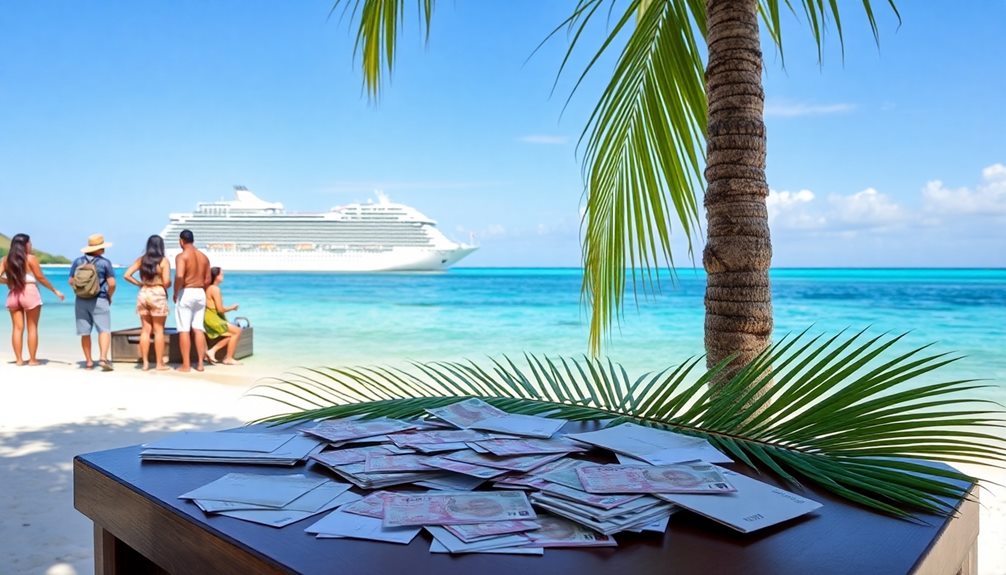
Tipping is an essential part of shore excursions, and knowing how much to give can enhance your experience. When you take a tour, it's customary to tip tour guides between $5 to $10 per person for half-day tours and $10 to $20 for full-day excursions.
If you're using non-guide drivers, consider tipping around $2 per person. For customized private tours, tips can range from 5% to 20% of the total cost, reflecting the level of service provided.
Cruise lines often offer guidance on local customs, which can vary considerably by country. It's vital to familiarize yourself with these practices to avoid any faux pas.
While it's common to tip local staff assisting during excursions, you don't need to tip cruise ship staff accompanying the tours.
When budgeting for your excursions, remember to factor in these additional costs, as tips can accumulate quickly across multiple ports.
Planning Your Shore Excursion Experience
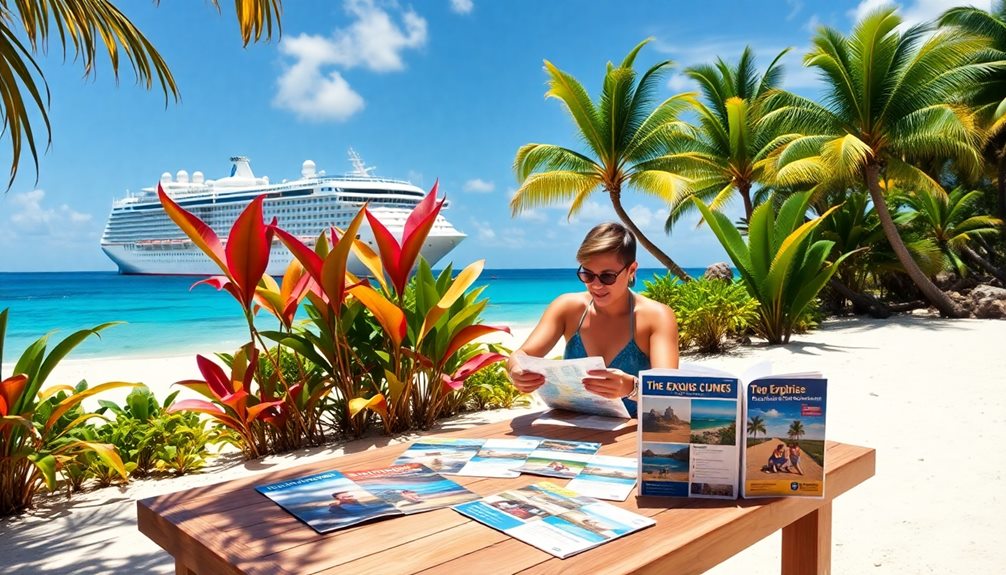
When planning your shore excursion experience, take the time to research and compare options from both cruise lines and independent providers. Prices for shore excursions can vary widely, ranging from $50 to over $400, so align your choices with your budget.
If you have specific activities in mind, it's wise to book popular excursions early, as they often sell out quickly. Don't forget to check the cancellation policies to avoid penalties for any last-minute changes.
Utilize online resources like travel blogs and forums to gather firsthand insights about specific excursions and local experiences. When considering activities, be mindful of the physical demands involved. Make certain planned excursions match the fitness levels of all travel companions to enhance everyone's enjoyment.
To create a well-rounded port experience, consider balancing guided tours with independent exploration. This approach allows you to explore at your own pace while still enjoying the insights of a guided experience.
Conclusion
In the grand adventure of cruising, your shore excursions can make or break your journey. With a little savvy, you can navigate the maze of policies like a seasoned explorer, ensuring you snag the best deals and avoid cancellation catastrophes. Picture yourself, basking in the sun on a pristine beach, sipping a cocktail, while others are stuck in the booking chaos. So gear up, plan smart, and let your shore excursions turn your cruise into the trip of a lifetime!
Alfons is the visionary leader and driving force behind Voyager Info’s success. As the Editor in Chief, he brings a wealth of experience and an unwavering passion for travel to the helm of our cruise-centric platform.
With a lifelong fascination for exploring new horizons, Alfons discovered his love for the ocean and cruising at a young age. From sailing across pristine Caribbean waters to embarking on daring expeditions to far-flung destinations, he has amassed a treasure trove of first-hand experiences in the world of cruising.

